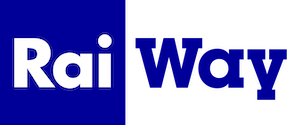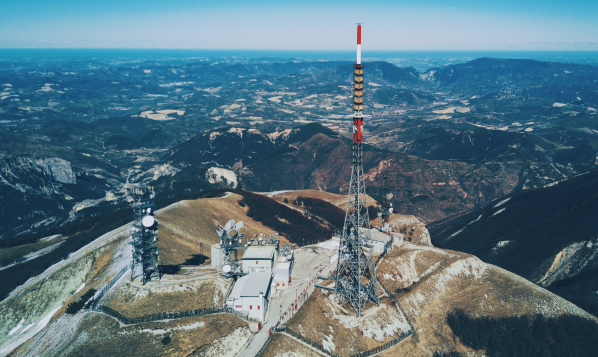Rai Way’s Activities and Market Context
Integreted digital infrastructure and services for media content distribution
We guarantee a public radio and television service for the broadcasting and transmission of radio and television content, both in Italy and abroad. We use our assets, as well as the most advanced technological solutions, to offer infrastructure and network services to our customers.
Evolving in line with market trends.
We have established our position as leaders in the Italian market for communication and network services infrastructure. This is thanks to our distinctive characteristics, such as:
- the widespread nature of the network throughout Italy
- the excellence of the knowledge and operational skills of our highly qualified personnel
- reliability in ensuring a public service mission
- financial soundness, which allows us to make important investments
- our dynamic approach to seeking out new technology.

- Rai Way's fibre optic contribution network allows for the interconnection of Rai's production centres and regional offices, which send high-definition audio-video signals.
- All signals sent by Rai flow onto a matrix at the Rai Way national control centre in Via Teulada (Rome).
- Saxa Rubra (Rome) represents Rai's main broadcasting point, to which we are connected via fibre optics. Rai gives us all the signals to distribute.
- The signals are inserted in the Head Ends, platforms where they are packaged in the multiplex that must distribute them.
- Once the multiplexes are packaged, they are transported through our digital terrestrial distribution network, via radio link networks or fibre optics, to our broadcasting network (2,300 sites distributed throughout the country).
- From the broadcasting systems - our towers - the multiplex signal is diffused in the coverage area, reaching the TV antennas and radios of the end-users.
Business Model
Broadband & Broadcast Platforms
Our business model is evolving to reflect changes in the sectors in which we operate, which are undergoing a profound and dynamic process of innovation and transformation, as well as new ways of consuming content.
In terms of the television market, Italy is characterised by the resilience of its digital terrestrial broadcasting (DTT), which is much more prevalent than other television platforms, when compared to other countries.
Rai Way, already a leader in the digital terrestrial broadcast platform, has been riding the wave of growth in the broadband market by developing a proprietary Content Delivery Network designed to benefit broadcasters and OTT operators in meeting the ever-increasing demands of video streaming
Analog and Digital Radio
In terms of the Italian radio market, the transmission of analogue radio in FM is supported by DAB+ (Digital Audio Broadcasting) networks. The two transmissive technologies will continue to work parallel to each other.
As well as ensuring the transmission and broadcasting of RAI radio services, we are progressively expanding digital methods of content reception through our transmission and broadcasting networks into DAB+ technology, which is already present along the main Italian roads and motorways, as well as in all densely populated areas.
Tower business
Our unique network infrastructure, characterised by quality towers strategically placed to provide coverage to the entire population of Itaand landscapely, makes Rai Way’s assets a point of reference not just for TV and radio clientscostumerscustomers, but also for the development of services for telecommunications operators.
What sets our towers apart is, in particular, their presence in rural and more peripheral areas of the country. This was necessary in guaranteeing a public radio and television broadcasting service.
Our services integrate hosting (i.e., the hosting of our towers on third-party apparatus, such as that of broadcasters and telecommunications operators) and complementary services which add value to the planning of networks, the management and maintenance of systems, and energy supply.
Our assets support the development of mobile network coverage, as well as the extension of fixed broadband services in white and grey areas. This is achieved through Fixed Wireless Access technology.
Traditional services related to Tower Rental and transmission and broadcasting needs are now joined by innovative services and new assets.
With the completion of a private CDN (Content Delivery Network) and the first five edge data centers, which are part of a more extensive infrastructure under construction and distributed nationwide, we have expanded our portfolio of services to offer server colocation and housing, virtual private clouds, cloud object storage, and low-latency connectivity to meet new communication needs, as well as network solutions for content distribution over public IP networks (Internet), with high Quality of Experience for end users.
We contribute to the technical evolution of the country through our activities and investments.





